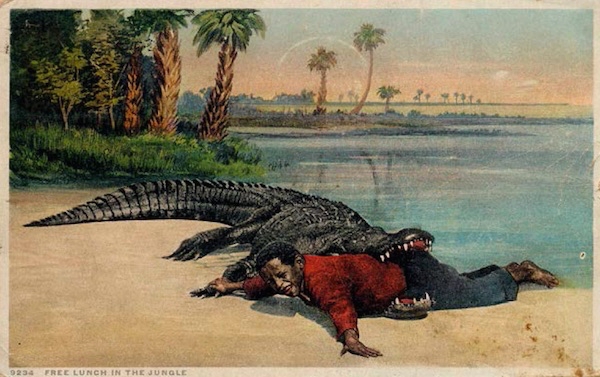How America bought and sold racism, and why it still matters

We've all encountered what people today call Black Memorabilia - a Mammy cookie jar, a racist postcard - but have you ever wondered where these depictions came from, and why they are so common? In her latest article for Collectors Weekly, Lisa Hix interviewed Dr. David Pilgrim, author of Understanding Jim Crow, to get some answers to these and other questions. Hix learned that Black Memorabilia was popularized by post-Reconstruction whites to dehumanize African Americans, and that while slavery may have ended in 1865, Jim Crow has persisted in various forms and guises to this day, which helps explain why the presence of an African American family in the White House has not been enough to put America's racial history behind us.
Stock caricatures such as Mammy, Uncle Tom, Sambo, pickaninny children, coon, Jezebel, Sapphire, and the black brute were employed to spread these messages to millions of people. Companies mass-produced these images in every form - including postcards, cleaning products, toys and games, ceramic figurines, ashtrays, cast-iron banks, children's books, dinnerware, songbooks, tea towels, cookie jars, matchbooks, magazines, movies, gag gifts, salt-and-pepper shakers, planters, fishing lures, trade cards, ads, records, and tobacco tins. If you lived during the Jim Crow era, you'd encounter such caricatures everywhere, in your newspaper, on restaurant walls, on the shelves at stores, and at the cinema or live theater.
"If you believed that black men were Sambos, childlike buffoons, for example, then why would they be allowed to vote?" Pilgrim says. "Why would they be allowed to hold office, serve on a jury, or attend public schools with whites? If black men were brutes who were a threat to white women, why would they be allowed to share beaches, public-school classes, or taxicabs? If black women were Mammies whose best roles in life were serving white families, why would they be allowed in other occupations when the society needed them for that? So the caricatures, and the stereotypes which accompanied them, became rationalizations for keeping blacks at the bottom of the racial hierarchy. Perpetuating these caricatures was a way to make sure you didn't have to compete against black people economically. In short, it was a way of sustaining white supremacy."